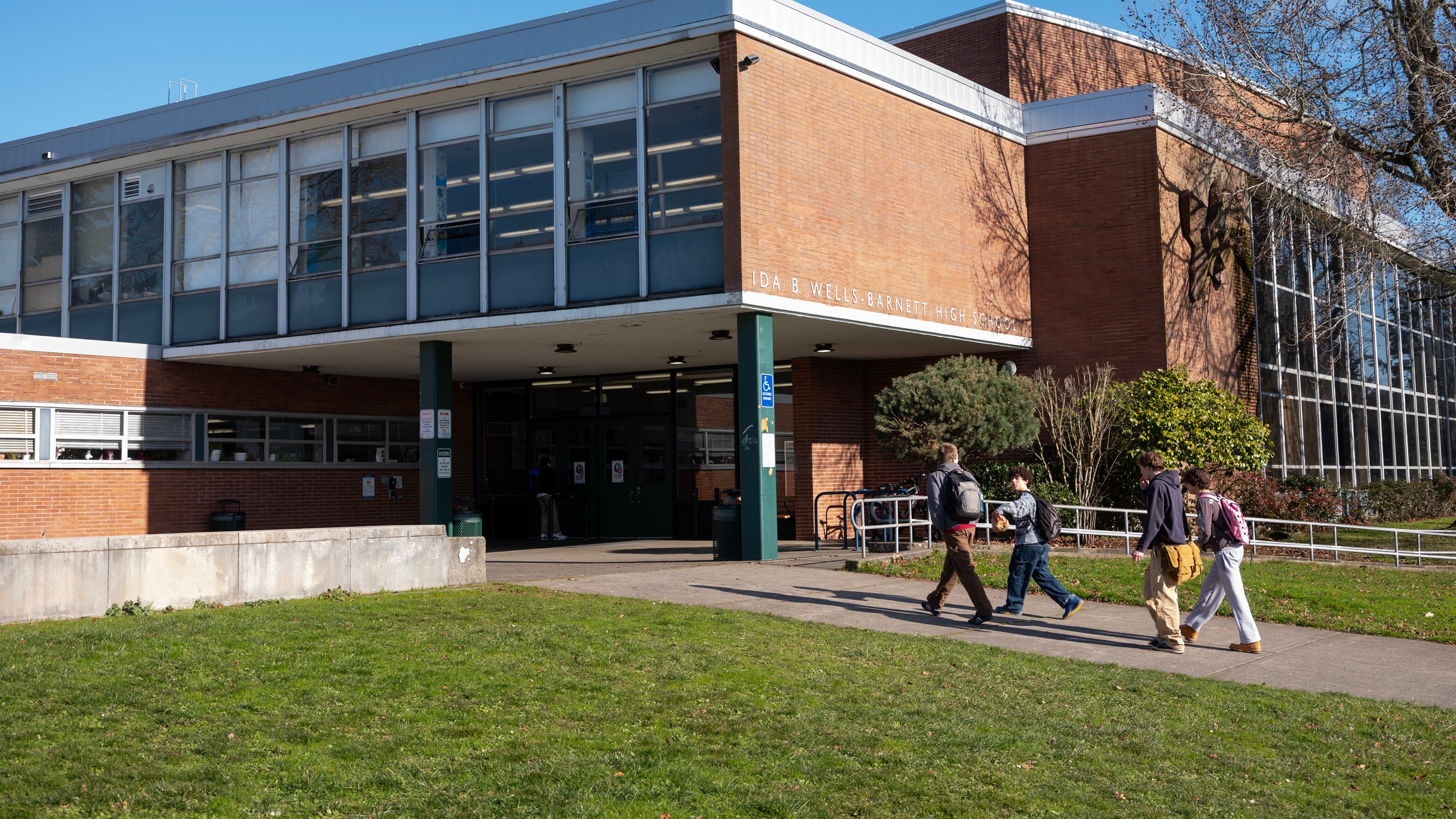In its quest to lower price tags on what would be among the nation’s most expensive high schools, Portland Public Schools now estimates it can shave between $33 million and $67 million total off three high school modernization projects.
Tonight, the School Board will review three presentations and a staff memo after it tasked district officials and high school design groups to lower their project budgets in response to a February board-approved framework. That framework guided district officials and project design teams to shave the square footage of schools, reevaluate spaces like teen parent and health centers, and consider alternatives to LEED Gold certifications.
Those presentations reveal a sobering reality for the district, which at one point in the fall hoped to shave more than $100 million from each project. It also comes as the district is building more high schools than it’s expected to have students to fill, and as dozens of its elementary and middle schools are in dire shape (“Too Many High Schools,” WW, March 19). The three high schools will all require money from an upcoming $1.83 billion school bond, which voters will be asked to approve in May 2025.
This is the breakdown of PPS’s latest draft plans. (The district has rounded some decimals up or down, creating a slight disparity between the breakdown and the estimated total cost savings across all projects.)
- At Jefferson High School in North Portland, which is already funded by $366 million from the 2020 bond but whose budget skyrocketed to $491 million by October 2024, district officials project savings between $25 million and $33 million. That would put its budget anywhere between $458 million and $466 million.
- At Cleveland High School in Southeast Portland, which has received $20 million from the 2020 bond thus far, district officials project savings between $7 million and $19 million from its original $469 million budget. That would put its budget anywhere between $450 million and $462 million.
- At Ida B. Wells High School in Southwest Portland, which has received $20 million from the 2020 bond thus far, district officials project savings between $3 million and $15 million from its original $455 million budget. That would put its budget anywhere between $440 million and $452 million.
The district’s memo cautions that these preliminary estimates are subject to change. “The figures provided are based on rough order-of-magnitude cost estimates from the project teams,” wrote its authors, chief operating officer Dan Jung and Stormy Shanks, senior director of the Office of School Modernizations.
“Several factors may influence these projections, including potential schedule delays, escalation changes, and tariff fluctuations,” they wrote. “Additionally, the teams are actively reviewing project details to identify further cost-saving opportunities.”
In individual school presentations, it appears the bulk of cost savings will come from reducing square footage from about 320,000 down to about 295,000 per building. This was an option long favored by PPS Superintendent Dr. Kimberlee Armstrong, who in February said it would help save the district $24 million across the three projects.
The Cleveland presentation makes no mention of the future of a teen parent center or health center in the building. The presentation at Wells notes that a health center is in the works, alongside a commitment from a health care provider to staff it, but that it could be repurposed. The Jefferson project would preserve a preexisting health center and build a teen parent center.
Until these new plans, PPS has kept the prices of its upcoming rebuilds quiet since an Oct. 21 board meeting. At a Feb. 11 meeting, Jung told board members he was “colloquially” estimating PPS could save $20 million to $40 million from each project. Now, the district’s high-end savings estimates are just above the lower end of his projections.
If the May bond passes, the district would allocate $1.15 billion of the funds it raises to modernizations. It has kept high school budgets flexible, choosing not to break down specific costs per school. School Board members have said this is so any leftover money from high school projects can be directed toward elementary and middle school modernizations.
Because the 2020 bond accounts for $406 million of the project costs from the estimated total of $1.38 billion, district officials estimate that remaining funding for the projects is between $942 million and $974 million, leaving a balance of $176 million to $208 million to support other rebuilds.
